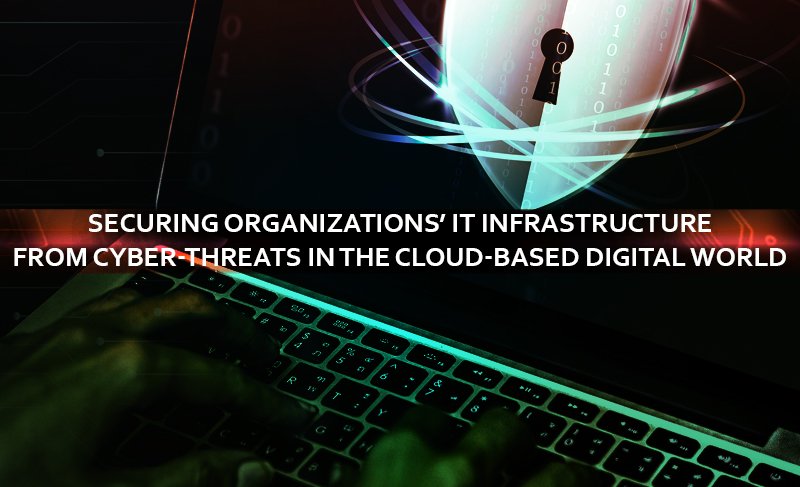
Securing Organizations’ IT Infrastructure from Cyber Threats in the Cloud-Based Digital World
“Cyber security is not only about securing the organizations from cyber threats but also about implementing an innovation-based approach that protects the entire data; technology, and IT infrastructure against all kinds of cyber threats. Leader Group’s robust cybersecurity solutions help organizations secure their IT infrastructure against cyber threats.”
The world is undergoing massive disruption. The COVID-19 pandemic has put everything in a jittery way, making people, organizations, and communities experience change and face challenges.
As time passed, the challenges that seemed difficult in the beginning have now become opportunities.
Businesses adapt to these changing times, imply digital transformation; and align themselves to the new normal, leveraging new digital tools and technologies.
While the digital tools are limited to a few; digital technologies prevail rapidly; including AI, Blockchain, RPA, and IoT at its forefront, enabling businesses and organizations to thrive in the changing times.
As the penetration of digital tools and technologies becomes standard in the new normal; the obstacles to these digital tools and technologies are plenty, ranging from cyber threats to digital tools and technologies to the compromised data in the IT infrastructure.
Moreover, organizations are becoming more aware of the significance of digital tools and technologies and taking steps to invest massively in digital transformation technologies; thereby contributing to digitally-driven infrastructure in the organizations.
According to recent research, the market value of the cybersecurity market will reach USD 345 Billion by 2026.
However, this massive figure suggests the rising need to implement cybersecurity solutions for organizations; owing to a surge in cyber threats, both planned and unplanned cyber threats.
Also, companies are becoming more vulnerable to cyber-attacks and cyber threats as they have adopted to remote work model; which gave easy access to the cyber-attackers via phishing emails and digital communications.
Elements of Cyber Security:
Risk Assessment:
To start with, the very first approach to solving any risk is assessing the risk. The same goes for cybersecurity-related issues.
When cyber threats occur in an organization; it can also be as simple as a phishing threat to as large as imposing the risk to the entire IT infrastructure of the organization.
Organizations follow a framework for cyber security that includes risk assessment essential element that helps firms know the potential of cyber threats.
Data Classification:
Data forms the core key in an organization. Also, it becomes more significant while organizations are entirely dependent on digital data, analyzing it, and making actionable insights.
Data get categorized as organized data and unorganized data.
While organized data depends upon the earlier trends; the unorganized data does not have a pre-defined historical trend, making it more complex.
Such complexities arise due to changing business requirements, making the data more unorganized and scattered.
Hence, data classification becomes essential for a smooth cyber security process.
Security Controls Implementation:
After assessing and identifying the risks, the next step in the cybersecurity framework is risk control with the help of risk control measures.
Organizations implement risk control measures that make them resilient to risks and prepare a roadmap to combat the cyber threats that may arise, thereby enabling a robust risk control framework.
Security Control Performance Verification:
Once the risks are evaluated and known to the organizations; the next element of the cybersecurity framework consists of security control performance verification.
After implementing security control, organizations take into account the performance verification of those security control.
Organizations, these days, are investing massively in security control metrics which creates a risk-free environment for all.
Risk Acceptance and Transfer:
Not all risks get mitigated. No matter how smooth the cybersecurity framework looks, there are always a few risks that remain unattended and cause unorganized threats to the organization’s cyber security.
As the risk acceptance and transfer measure, companies take measures that mitigate the risks at hand and take crucial steps that prevent the organizations from forming unorganized risks that may arise.
Leader Group’s Cybersecurity solutions focus on all these risk assessment guidelines and frameworks to deliver a robust cybersecurity plan to its customers, enabling them to remain risk resilient.
Furthermore, its three-pronged approach focusing on People, Processes, and Technology involves implementing controls that defend organizations from organized cyber-attacks and common internal threats, such as accidental breaches and human error.
Moreover, apart from protecting the digital data, tools, and technologies; Leader Group also takes essential measures that focus on mitigating the risks by implementing Business Continuity Plans (BCPs), conducting a Business Impact Analysis (BIA), and conducting Threat and Risk Assessments (TRA).
Such cyber security measures from Leader Group ensure a seamless, cyber-secured environment.
Conclusion – Cyber Threats:
To conclude, Digital is the new normal; hence the implementation of digital tools and technologies has become normal for a robust cyber security solution.
By being cyber-savvy; and leveraging the power of digital data, tools, and technologies, organizations, in conjunction with the risk mitigation strategies; favorably position the organizations to create a sustainable future transformation through innovation and risk averted environment.





